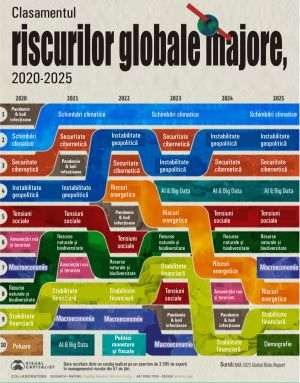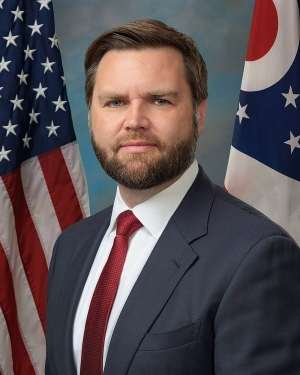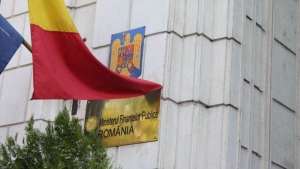As the cap on holdings by individual investors was being raised, projects and strategies to go around it have been were conceived, as Bîlteanu and Lakis did by having SIF Banat Crişana take over the manager of SIF Muntenia.
After the sentencing of the two (on charges of market manipulation and money laundering), the expansion plans of SIF Banat Crişana continued under the presidency of Drăgoi, with Lakis as his right-hand man.
Even though convicted, he works as Drăgoi's adviser, who is doing things that are similar to those for which Lakis was convicted; the two claim (and the ASF agrees with them) that SIF Banat Crişana and SIF Muntenia are not actually acting in concert with the 13 investment funds in which, in some cases, they hold overwhelming majorities and through which they have a 30% control stake in the General Shareholder Meeting of SIF Oltenia.
It is enough for SIF Oltenia to be controlled by the will of SIF Banat Crişana.
It is at this moment in history, that the holding cap is eliminated.
Goodbye populism!
Goodbye socialism!
Some say that, in fact, there is a plan to swallow all the SIFs, in one greedy mouth - a shady affair, backed by the members of the former secret police (Securitate).
If so, then the story of the SIFs is the story of the regret with which the cryptocommunists made regular citizens.
They have now come to take back their wealth.
(MAKE)
Last day - tomorrow the SIF holding cap will be gone
• Gheorghe Piperea: "The SIFs holding shares in each others has allowed a certain type of concerted actions, which faked the majorities in the General Shareholder Meetings and allowed the hostile takeover of managerial control at three out of five SIFs"
• "The complete lack of reaction from the authorities, before the holding cap is eliminated, when it comes to making sure everyone plays by the rules, is amazing", a market player says.
• Diverging opinions regarding the situation of illegal actions in concert discovered so far or which are on the docket in the courts
The holding cap for the SIFs will be officially eliminated, starting tomorrow, when the article of the law that prevents shareholders from owning, directly or directly, more than 5% of the share capital of a SIF will be abrogated.
The shareholders of all five SIFs opted for the complete elimination of the holding limit from the bylaws, with the companies becoming alternative investment funds intended for retail investors, in accordance with the provisions of the Law on alternative investment funds, which last year went through the entire legislative process, and was promulgated by president Klaus Iohannis in December 2019.
Regarding the impact that this event may have on the SIFs, lawyer Gheorghe Piperea told us: "From my point of view, with the elimination of the holding cap, there will be changes for the worse at the SIFs.
The SIFs were important and stable stock market entities at a time when shareholders were atomized. Excessive concentrations of stock holdings were not allowed, and sos, that prevented one or more groups of people exercising control over the SIFs. In my opinion, the control will be harmful because, on the one hand, it will lead to the sell-off of many of the SIFs assets and, on the other hand, it will lead to a decrease in the concern for the protection of minority shareholders, for corporate governance and transparency".
In his opinion, there will be concentrations of stock blocks so severe that the five SIFs will be essentially be controlled by two or three groups of investors.
"I estimate that, in a year, the SIFs will turn into something similar to Fondul Proprietatea, which is going down the road of liquidation and disappearance," Gheorghe Piperea told us.
The lawyer further said: "Incidentally, the first step on this fatal slope of concentration with the goal of liquidation was made a few years ago, when SIFs were allowed to hold stakes in each other. I think it was a big mistake, not only because it killed the competition between the SIFs, but also because it allowed a certain type of concerted action, which allowed the faking of majorities in the General Shareholder Meetings and the hostile takeover of managerial control in three out of five SIFs. The ASF refused to acknowledge those facts, but they exist and they have a very harmful economic and legal impact on the market. As a result, important entities of the stock market currently find themselves in a black hole of credibility."
On the other hand, a capital market player told us that, during this period, the shares of the SIF should have risen substantially.
He told us: "However, it seems that there are already controlling interests that have been formed before the official elimination of the holding cap, so there is not much interest from investors to buy shares in the SIFs. If there is buying, it is perhaps for bolstering the already existing holdings".
The complete lack of reaction from the authorities, before the holding cap is eliminated, when it comes to making sure everyone plays by the rules, is amazing. There are people who have bought shares in the SIFs above the allowed cap, before its official removal".
Mihai Radu, former vice-president of the National Securities Commission (CNVM) between 1994 and 2000, told us that, from his point of view, normally, after the elimination of the holding cap in the SIFs, their stock price should increase.
He told us: "The SIFs could also attract «other» kinds of investors, people eager to buy shares, and therefore, small investors, if they have their own interest in mind, should not be too quick to sell their shares. I am convinced that after this, some investors with money, will buy shares in the SIFs, in order to later to be able to do their own business, due to having a say on the Board of Directors. The SIFs hold shares in various companies, most of them unlisted, and if a person with great power in a SIF wants such a company, they can easily buy it. "
The former vice-president of the CNVM also thinks that the lifting of the holding cap may attract foreign investors as shareholders of the SIFs.
"I find what is happening perfectly normal and we need to see if the SIFs will be what their intended role was from the start, since back when they were Private Ownership Funds (FPPs). To invest, to support the economy, to provide capital. In the end, that's what it was all about, "said Mihai Radu.
Regarding the situation of illegal actions in concert discovered so far or which are pending in the courts, Gheorghe Piperea told us that we are in a situation where it could be considered that, since the law no longer prohibits actions in concert of more than 5 %, the violation of the law in that regard no longer applies, due to the effects of the more lenient law.
Another person involved in the stock market does not share that opinion. They told us that the provisions of the law which eliminate the holding cap in the SIFs do not apply retroactively.
They told us: "Those who normally would only have been allowed to hold a maximum of 5% of the capital of a SIF may continue to be subject to the effects of a ruling which finds that they broke the law in that regard. On the other hand, we must not forget that there are also legal reporting obligations, which are part of the legal status of market abuse. We are talking about inside information, which needs to be reported. And the fact that someone owns 30% of a company listed on the regulated market is inside information, which must be made public. There are legal norms, which transpose European Union regulations, which set thresholds above which holdings must be reported. So things do not end here and anyone will be able to buy no matter what, without reporting".
The introduction of a holding threshold in SIFs was approved in 1997 by the shareholders of the SIFs themselves, when a cap of 0.1% was set. The main argument for introducing and subsequently maintaining the limitations was that, given the very large and atomized shareholder structure, it would have been relatively easy for some people to achieve controlling interests with a small fraction of the total capital and then manage companies those companies for the exclusive benefit of small interest groups.
In 2005, the change of the holding cap from 0.1% to 1% was approved via an ordinance, and a year later it was decided that the 1% limit would also apply to groups of investors acting in concert.
At the end of 2011, the Chamber of Deputies approved the legislative draft for raising the maximum holding cap for the SIFs, from 1% to 5% of the total shares issued by each company.
Last year, all five financial investment companies marked saw significant rises in their stock prices, from 82% for SIF Transilvania (SIF3) and 23% for SIF Oltenia (SIF5), which, according to some brokers and analysts, was mostly due to the prospects of the coming into force of the Alternative Investment Funds Law, which opened the way for the elimination of the holding cap.
• Historical milestones
At first they were called Private Ownership Funds or, in short, FPPs. In 1995, the Mass Privatization Program changed their name to Financial Investment Companies (SIFs) to better reflect their new status and economic role.
In 1999, their shares were listed on the Bucharest Stock Exchange, and shortly thereafter they became the most liquid (and attractive) securities traded on the Romanian market, a status they still have, to a large extent, even today. They became significant shareholders in banks, in the BSE and SIBEX, were the subject of fierce struggles for control, attracted key figures in the business world, and even the attention of some who operated on the hard-to-define boundary between legitimate business and money from questionable sources.
[...]
The establishment of FPPs was the direct consequence of a risky provision, introduced prematurely in the Law 15/1990, on the insistence of some economists of social-democratic orientation and some politicians of the moment, who considered it mandatory that the law ought to include a stipulation concerning mass privatization with the participation of the population, in order to keep both the promises made and to meet expectations. Thus, the stipulation that "30% of the share capital of commercial companies" would be allocated free of charge to eligible Romanian citizens. How much did that 30% actually mean, how would it be divided, in what manner, how would eligibility be determined, which institutions would be appointed to manage the process and many other such questions, the answer was sought for for a year and only at the end of May 1991, the draft privatization law appeared, which stipulated for the allocation of that 30% share to five collective investment undertakings, somewhat inspired by the experience of "SICAV" funds in France, which would be called Private Ownership Funds and would be located in Bucharest, Brasov, Bacău, Arad and Craiova.
Those institutions would be staffed by specialized personnel with good knowledge of economics, finance and foreign languages who had to manage the wealth allocated to about 17.5 million citizens until the time they were able to capitalize on their holdings by converting them into shares in other companies or by selling them.
Discussions on the methodological norms for the application of the law continued until the start of the actual operation of the FPPs, but the main coordinates were outlined through discussions with specialists brought in by a leading investment banking firm, Lazard Freres, as well as with those who provided assistance from the outset in the field of privatization, namely from Shearman & Sterling and Coopers & Lybrand, and after beginning operation, each FPP received technical assistance from top specialists compensated via bilateral government programs such as former British Know How Fund for FPP4 Muntenia, or multilateral programs such as the EEC Phare program.
The discussion and the selection of technical solutions for the allocation of actions between the five FPPs were long and heated. The statement was simple: 30% of the shares of each of the approximately 5,700 companies had to be divided between the five FPPs and result in balanced portfolios, in terms of value. Various methods were proposed, simulations were made, various scenarios were reviewed, even a lottery allocation was proposed, attempts were made to take into account public perception of local ambitions, but the central goals pursued were to ensure a balanced distribution and an as fair as possible management in the interest of shareholders.
In the end, a method of allocation based on mixed criteria was chosen:
-for large enterprises, an allocation prioritizing certain sectors would be used, in order to give a strategic orientation to each fund (for example, for FPP3 Transilvania one of the orientations would be tourism and 30% of the shares of the largest companies in the tourism sector were allocated to the fund, for FPP1 Banat-Crişana, one of the strategic components was timber processing, pulp and paper industry, for FPP5 Oltenia there was a preferential allocation of shares of companies in the chemical industry, etc.);
- for small and medium enterprises, as a general rule, the allocation based on geographical location was chosen.
These criteria sometimes overlapped, and were no longer taken into account at the time of drafting the Mass Privatization Program, but that initial allocation left its mark on the portfolios of the five FPPs and the current SIFs inherit quite a bit of the initial orientation and retain the best elements of the initial allocation.
Shares in banking companies represented a particular case: 30% of the shares of banks with majority state capital were divided equally between the five FPPs, which subsequently led to synchronizations of the strategies of the SIFs that went further than would have been desirable. In fact, the "alignment" of the SIFs' policies was very strong for many years (if we look, for example, at the scale of dividend payouts or joint subscriptions in the shares of certain companies), making the initial notion that they would be competitors disappears.
Looking retrospectively, the effective allocation was a success, considering that even after serious transformations and changes, both within the SIFs and in the economic environment in which they operate, a relative balance is maintained and some of them have preserved certain strategic orientations (see SIF3's holdings in the tourism sector, for example).
As for the management method, from the outset, foreign consultants were of the opinion that it should be assigned directly to professional fund managers. In 1991-1992, what happened more than 15 years later with Fondul Proprietatea was not acceptable in Romania, namely entrusting the management of some Romanian assets, the property of the Romanian citizens, to foreigners. The Romanian legislation did not explicitly provide for the possibility of the manager of a joint stock company being a legal entity (the first institution with dual management was a "privately managed public institution", namely, the Bucharest Stock Exchange, in 1995).
On the other hand, in 1992 there were not too many professional managers eager to face to face with the miner rioters.
Thus, this resulted in the first SIF leaders being appointed politically, respectively by the Romanian Government, by ordinance, and later by the Romanian Parliament, with the whole litany of consequences of too close ties between politicians and asset management.
If we look at the list of the first appointments (see list), we notice both some lines of continuity and certain ties based on shared interests that persist today. Fortunately, the skills and concerns of politicians at the time did not allow for a very brutal interference and the need for correct and efficient management, as well as the ongoing professional training and the contact with foreign specialists prevailed, inducing a strong professional component. However, the connection with the politicians allowed some members of the SIF management to protect their positions very effectively and to exert a considerable influence on the drafting and the amendment of any legislation affecting the bylaws of the SIFs (see the delays between the appearance and the passing of the law concerning the holding cap, for example).
[...]
The initial concept suffered a lot of influences, but we can state that one of the initial objectives, namely that of creating some major financial companies, which would help the regional economic development, was achieved.
Four of the SIFs, located in important urban centers (Arad, Bacău, Braşov, Craiova) have developed into key points of support for the economy of their respective regions, have built imposing offices in the respective cities, have contributed to privatization, have invested in a number of businesses in the area, contributed to the management of several companies of local or national interest, were involved in the restructuring of distressed companies, made a significant contribution to professional training and improving management in areas where the influence of the central administration and of foreign investment has long been quite lacking.
[...]
The functioning of FPPs as supporting institutions in the privatization process between 1992 and 1995 was also a partial success. Partly because more could have been done, success because at that time the FPPs were the "spearhead" of privatization activities for small and medium-sized enterprises, constantly pressuring the State Ownership Fund to comply with its mission, and contributing directly to privatization by exchanging ownership vouchers for shares in more than 450 companies.
• THE LIST OF THE FIRST APPOINTMENTS
The following members of the Boards of Directors of the FPPs were appointed by Government Ordinance: at FPP I Banat-Crişana, Aristide Dragomir (engineer), Ilie Cenan (economist), Mircea Borza (lawyer), Emil Cazan (economist), Liviu Lupea (engineer), Ioan Florea (economist); at FPP II Moldova, Ionel Aichimioaie (engineer), Gheorghe Marcu (economist), Marian Enache (lawyer), Gheorghe Tănăsache (engineer), Victor Calapod (economist), Cristian Dumitrescu (economist / lawyer), Alexandru Matei (engineer); at FPP III Transylvania, Mihai Fercală (economist), Florian Firu (economist), Corneliu Rusu (economist), Cornel Ruse (engineer), Vasile Bran (engineer), Eugen Dijmărescu (economist), Constantin Dan Staicu (engineer); at FPP IV Muntenia, Ionel Blaga (economist), Aurelian Dochia (economist), Napoleon Pop (economist), Dragoş Stănescu (economist), Sorin Coclitu (economist), Bujor Bogdan Teodoriu (economist), Mihai Iordache (engineer); at FPP V Oltenia, Liviu Pârvu (economist / engineer), Tudor Ciurezu (economist), Ilie Teotoase (economist), Ion Miala (economist), Ion Dogaru (lawyer), Radu Berceanu (engineer), Ion Predescu (lawyer).
(BURSA / September 17, 2012)


















































